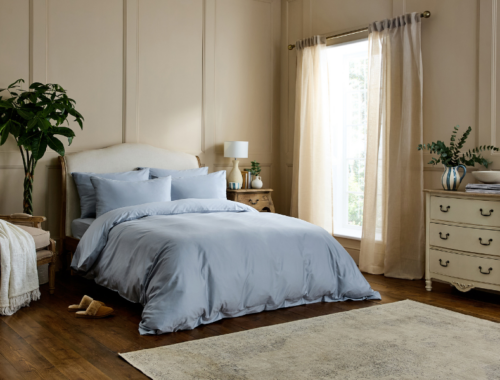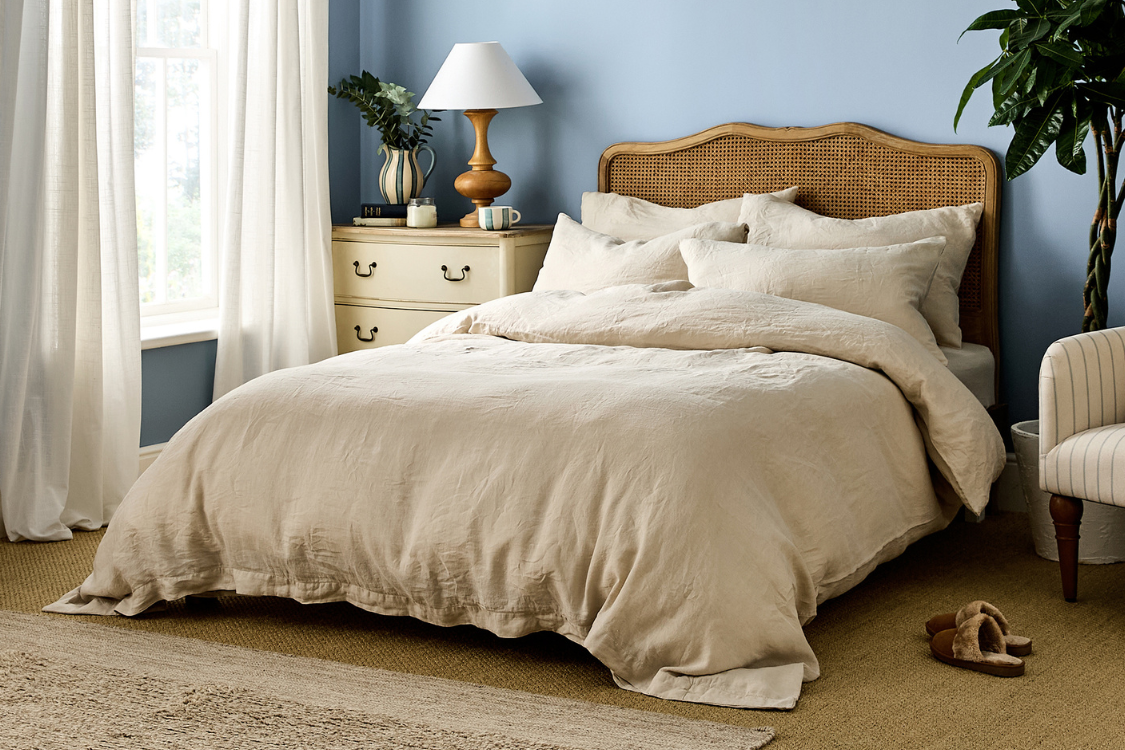
everything you need to know about linen GSM
It’s no secret that navigating bedding jargon can feel like a minefield! What is GSM? And do thread counts actually matter?
Here at the home of sustainable comforts, we believe that finding bedding best suited to your needs should be an easy process. So, stick with us for two minutes as we bust some common linen myths and shine a light on what really counts, and you’ll walk away equipped with the knowledge to make savvier purchases!
let’s start with thread count, shall we?
Thread count refers to the number of horizontal and vertical threads woven into one square inch of fabric. But, there are only so many threads that can fit into this space. So, to boost numbers, manufacturers often cheat by twisting lower quality threads together to boost the count. High thread count? Not always high quality. So, while it might sound impressive, it’s often misleading. And people are catching on. You can read more about the thread count myth here!
So, linen thread count, you ask? Well. Linen fibres, spun from the flax plant, are much thicker—leading to a looser, more open weave. Because of this, linen is measured in GSM rather than thread count.
understood. now tell me more about “gsm”?
GSM stands for grams per square metre. It measures the weight (and also indicates the density) of a fabric.
Historically, linen bedding was produced at a higher GSM, which made it extremely heavy and took years and years to soften. But that’s where modern craftsmanship comes in. Today, high-quality linen can be beautifully soft and built to last!
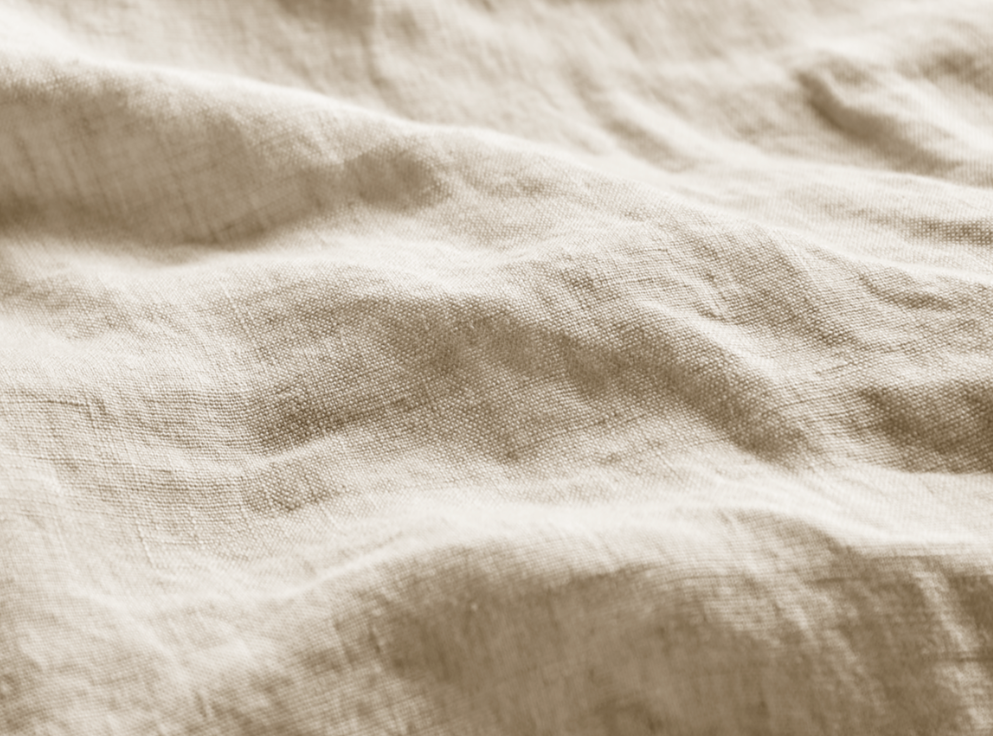
At Dip & Doze, our 100% natural flax linen bedding sits at a sweet spot of 165 GSM, and there’s a good reason for that. It falls at the optimal weight for year-round comfort; durable enough to last year after year and luxuriously cosy from day one.
No scratchy trial phase. No waiting for years of washing to soften it up. Just ready-to-snuggle linen that only gets even better with time.
what else to look for when shopping for linen bedding?
GSM is a great starting point, but fabric quality, origin, and craftsmanship are equally as important. That’s why we obsess over every step of the process—from farm to final fold.
Our linen is spun from European flax, a plant grown with minimal environmental impact in fields with deep-rooted heritage and the ideal climate for growing the finest fibres. These long, strong fibres give our linen its natural durability, breathability and softness. It caters to all skin types, too! It’s naturally antibacterial, hypoallergenic, moisture-wicking and temperature-regulating (keeping you cool in summer and warm in winter!). And how do we ensure our natural linen is as soft as physically possible? It’s pre-washed for that relaxed, vintage feel from first use!
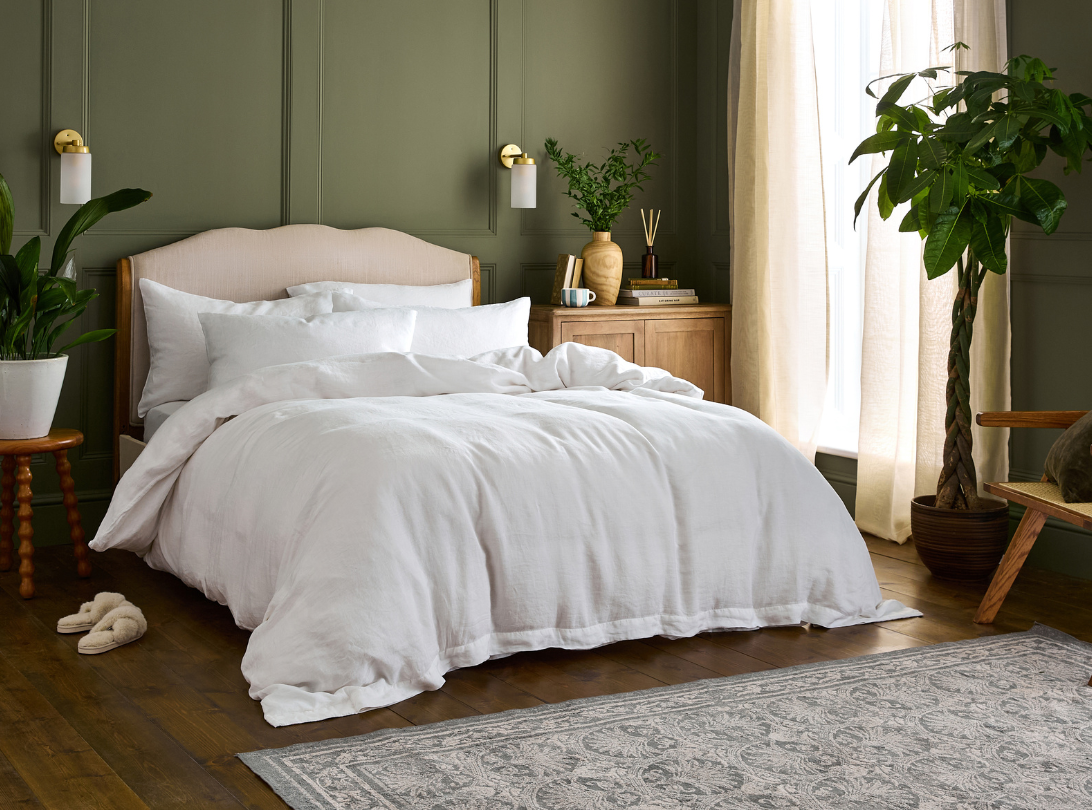
how to spot (and care for) high-quality linen so it lasts (and lasts)
Let’s put it this way, if linen was a person, they’d be quietly confident and gracefully resilient. So, here’s how to nurture your natural linen bedding and let it live the longest, most beautiful life it was made for.
The longer you sleep in your linen sheets, the softer they’ll get (win, win!). Let’s put it this way, if linen was a person, they’d be quietly confident and gracefully resilient. But that doesn’t mean they don’t require a little love and care. So, here’s how to nurture your natural linen bedding and let it live the longest, most beautiful life it was made for.
First, wash at 30 °C with a small amount of gentle liquid detergent. Avoid using too much softener, or omit altogether, as it coats the fibres and weakens them over time. Avoid any contact with things like zips, hooks and heavier items like jeans and towels, too, and wash these items separately to your bedding.
If line drying, your linen will have a crisper feel, so we recommend steaming it to help re-soften the fibres. If tumble drying your linen bedding, do so on a low heat setting. Be careful not to over-dry as excessive heat can damage the threads, causing your linen to become less soft.
When it comes to storage, opt for breathable, dark and dry spaces (try to avoid plastic containers!). And finally, for those of you really serious about prolonging the life of your linen, have two sets on rotation to keep one set from working overtime. Oh, and leave the iron in the cupboard! Linen’s natural crumples are part of its charm!
It’s time for you to enjoy the Dip & Doze difference. Sleep soundly knowing that all our home comforts are consciously crafted with the greatest care, so it’s healthier for you and gentler the planet.

celebrate world bee day with us!

behind the shade: almond
You May Also Like

organic cotton vs. conventional cotton
April 4, 2025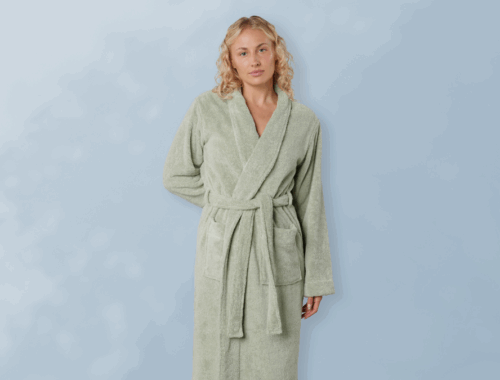
behind the design: long towelling robes
September 4, 2025